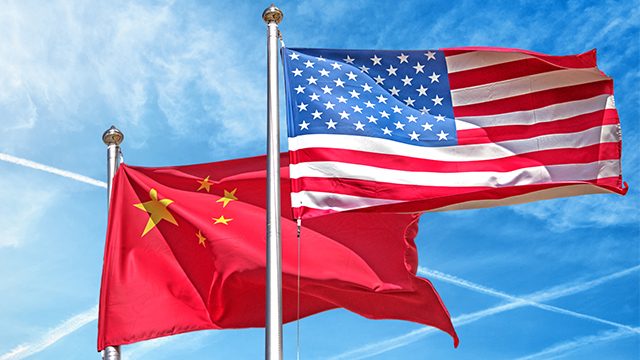SUMMARY
This is AI generated summarization, which may have errors. For context, always refer to the full article.

WASHINGTON DC, USA – After nearly two years of bare-knuckle battling, Washington and Beijing on Friday, December 13, at last announced a bargain to end the dispute.
The agreement came two months after US President Donald Trump first announced a “phase one” deal.
Below are major elements of the deal announced Friday.
Agreement in principle
The world’s top two economies – which engage in over $730 billion two-way trade annually – have yet to sign the text of the deal but say they have a bargain in principle.
US officials say they expect to sign the pact in early January after a legal review and once they have made certain the English and Chinese versions of the text are equivalent.
Officials will work diligently to complete a legal review and translations of the text before a final signing, Wang Shouwen, deputy minister of commerce, said Friday.
Areas covered
US and Chinese officials said the agreement includes protections for intellectual property, food and farm goods, financial services and foreign exchange, and a provision for dispute resolution.
“Importantly, the agreement establishes a strong dispute resolution system that ensures prompt and effective implementation and enforcement,” US Trade Representative Robert Lighthizer said in a statement Friday.
US officials have long said enforcement was crucial to ensuring that China holds up its end of the bargain, an area of nagging skepticism.
Boost for US agriculture
Trump has promised that any deal would include a commitment from China for a massive increase in purchases of US farm products.
At the White House Friday he said, “I think in agriculture they will hit $50 billion.”
But US officials told reporters China’s commitments for imports of $200 billion in all across 4 sectors including energy and manufacturing, would unfold over two years.
For agriculture, that would mean a return to 2017 levels when American farmers exported $19.5 billion in products to China. Those exports tumbled by more than $9 billion in 2018 as the trade war began and Beijing retaliated against US tariffs with punitive duties.
Han Jun, vice minister of agriculture in Beijing, said the partial agreement also would boost China’s farm exports to the United States, including cooked poultry, pears and dates.
“Some of these problems have been talked about for more than 10 years, and this time there has been a substantive breakthrough,” he said.
Tariffs on hold
As part of the deal, Trump canceled 15 percent tariffs that had been due to hit Sunday on $160 billion in Chinese goods, especially electronics likes cell phones and computers, which would have been particularly painful to US consumers.
And in a major concession, the US will slash in half the 15 percent tariffs on another $120 billion imposed September 1, on consumer goods like clothing.
While Chinese officials said the US agreed to roll back the other tariffs in stages, for now Washington will keep in place the 25 percent duties on $250 billion in imports.
China’s Vice Finance Minister Liao Min did not specify whether Beijing planned to cancel existing tariffs on US imports to China.
In September, Beijing removed tariffs imposed on 16 categories of US products. – Rappler.com
Add a comment
How does this make you feel?
There are no comments yet. Add your comment to start the conversation.